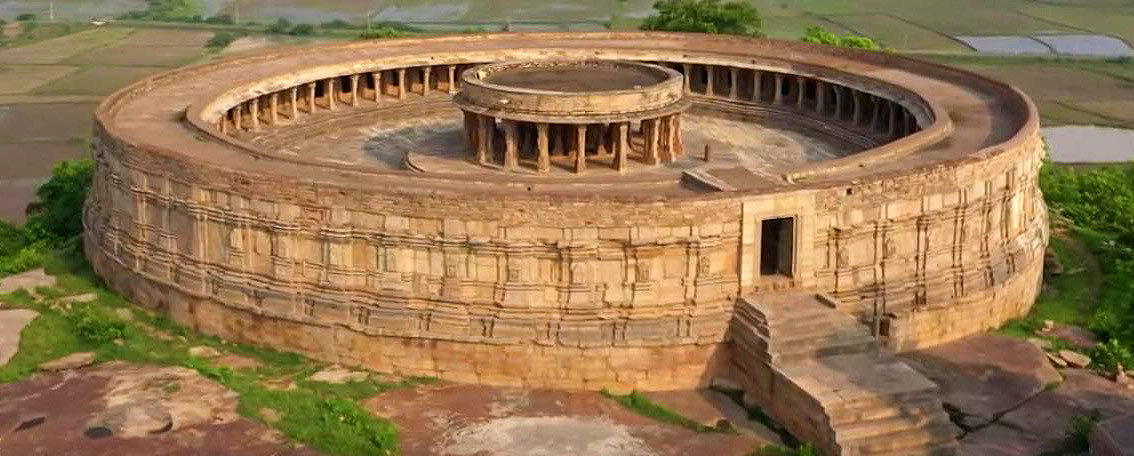
The intriguing temples of the 64 Yoginis
Among the multitude of Hindu temples that dot India those of the 64 yoginis (Chausath Yogini), which you can count on the fingers of one hand, occupy a very special place. These sanctuaries, dedicated to the tantric worship and to the “Shakti”, the universal creative force, still remain an enigma. Surprisingly, very few thesis have been developed on this subject, perhaps because Tantra is a secret knowledge that is only transmitted to a limited number of initiates, or perhaps it is because history tends to erase the cultural and spiritual heritage of women. The fact remains that the yoginis, powerful women, between myth and reality, shape our imagination and also bring us to a further reflection of what is the feminine principle.
Le Tantra & les Yoginis
The yogini temples mentioned in the introduction are related to Tantra. Tantra consists of initiatory techniques and methods originating in Hinduism and later developed in Buddhism.
The word appears for the first time in the hymns of the Rig-veda (sacred text of ancient India) with the meaning of “weaving”. According to the anthropologist Ron Barrett, this term is based on the metaphor of weaving which denotes “the intertwining of traditions and teachings”.
Tantra techniques, taught after a long apprenticeship with a master, would aim to develop human faculties both mentally and physically in order to reach a state of completeness.
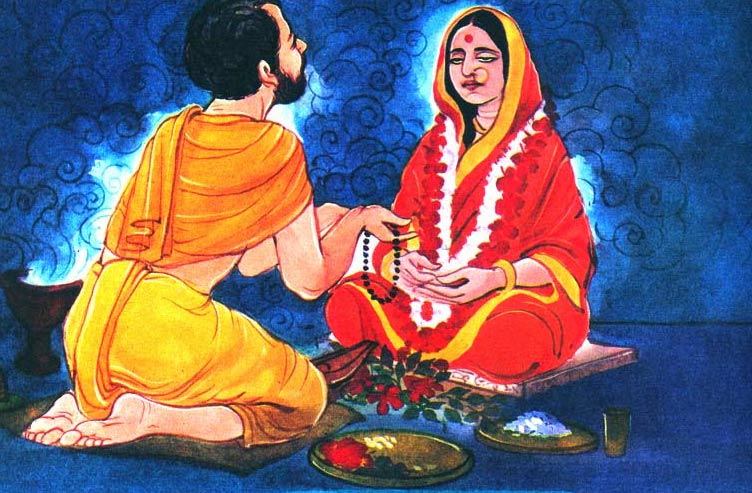
Tantra is not to be confused with “Tantrism”, a word coined by some Western yogis in the 19th century, which directly associates Tantra and sexuality.
Just as yoga has branched out into many absurd variations, “beer yoga” or “chocolate yoga” and so on, “tantric sex” is based on a very appealing syncretic mishmash, since it promises sexual prowess and ecstasy. However, it has little or nothing to do with the essence of Tantra.
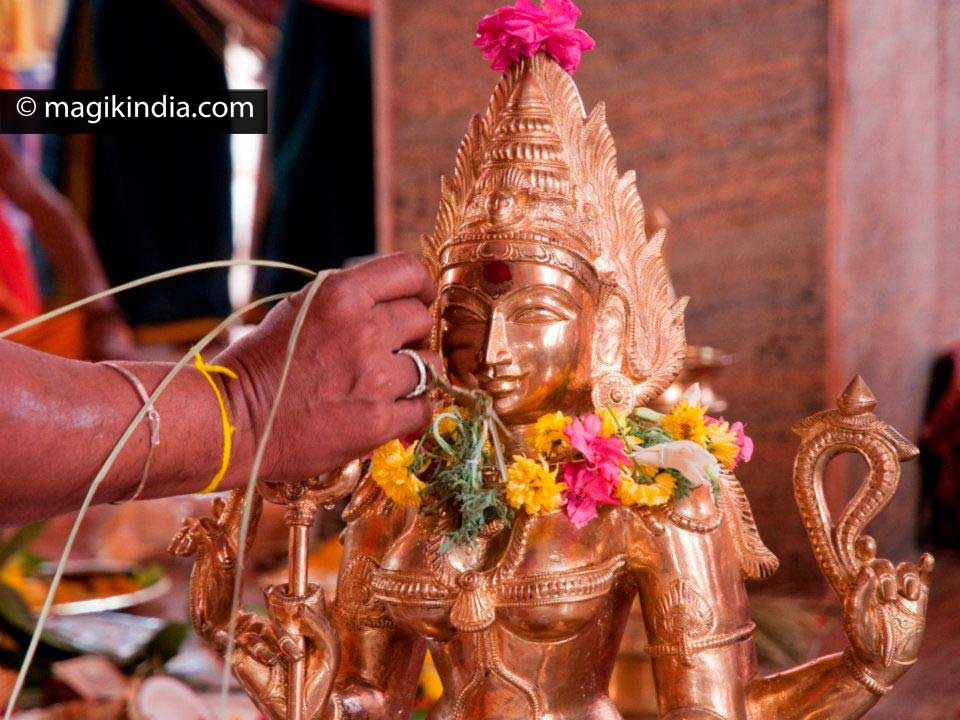
I will not develop too much on Tantra in this article but we can say here that we distinguish two main types of Tantra, one called “the right hand” (Daksinacara) and another called “the left hand” (Vamacara).
Daksinacara, also called “white tantra”, involves several orthodox practices such as meditation, yoga, recitation of mantras, abishekam (ritual centred on a statue), yagam (ritual of fire) and yantras (geometric figures, graphic meditation aids).
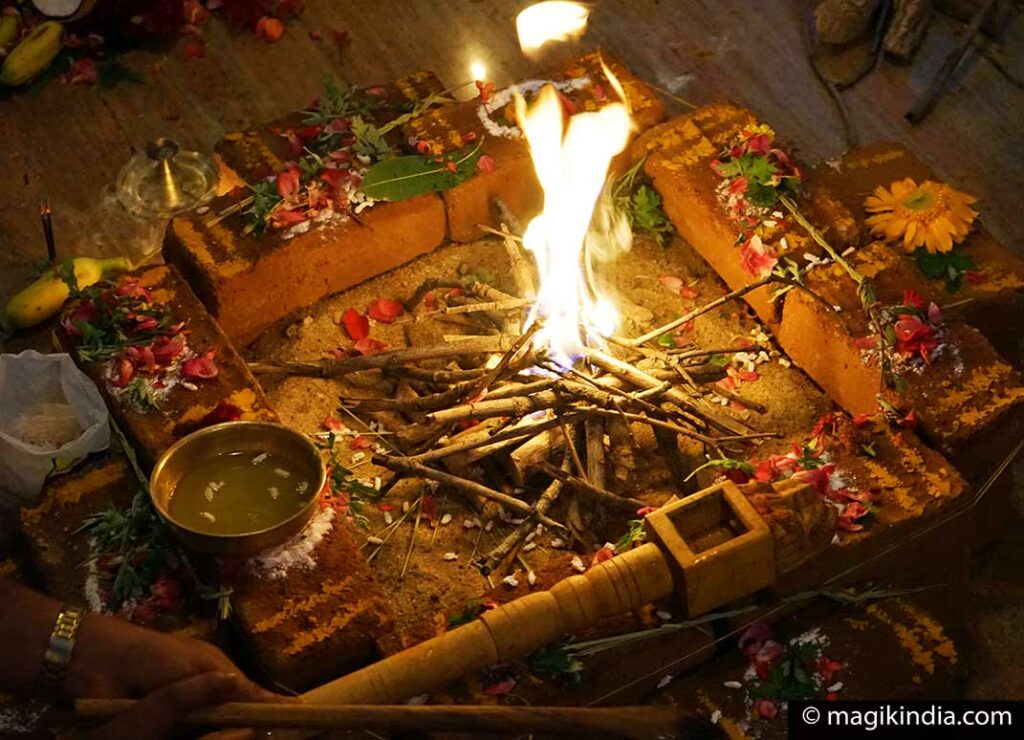
The Vamacara or “red tantra” includes several rituals qualified as “impure” or as black magic by the profane such as the consumption of alcohol, the offering of animals and “maithuna” (sexual unions).
By being connected to the Kapalika and Kaula tantra, the worship of the 64 yoginis is part of this red tantra.

The followers of Vamacara focus on the flouting of taboos as a means of liberation, using what is reprehensible to achieve transcendence. Here, it is not the actions or the offerings that are impure, but rather the attitude of the follower. If the acts are done with an elevated conscience then they are no longer immoral.
It should be noted, however, that the rites of red tantra have very often been interpreted through the prism of various fantasies. Historian David Lorenzen writes on this subject, “there is a dearth of primary sources on the Kapalikas, and historical information about them is available from works of fiction and other traditions which disparage them.”
Yoginis, women or goddesses?
“Yogini” in its literal sense means a woman who has become a master in the discipline of yoga. By “master” we mean “achievement”. Yoga, which is translated to “union” in Sanskrit, is not just a physical practice, it is an initiatory path which tends to unify the human being with their spiritual aspect.
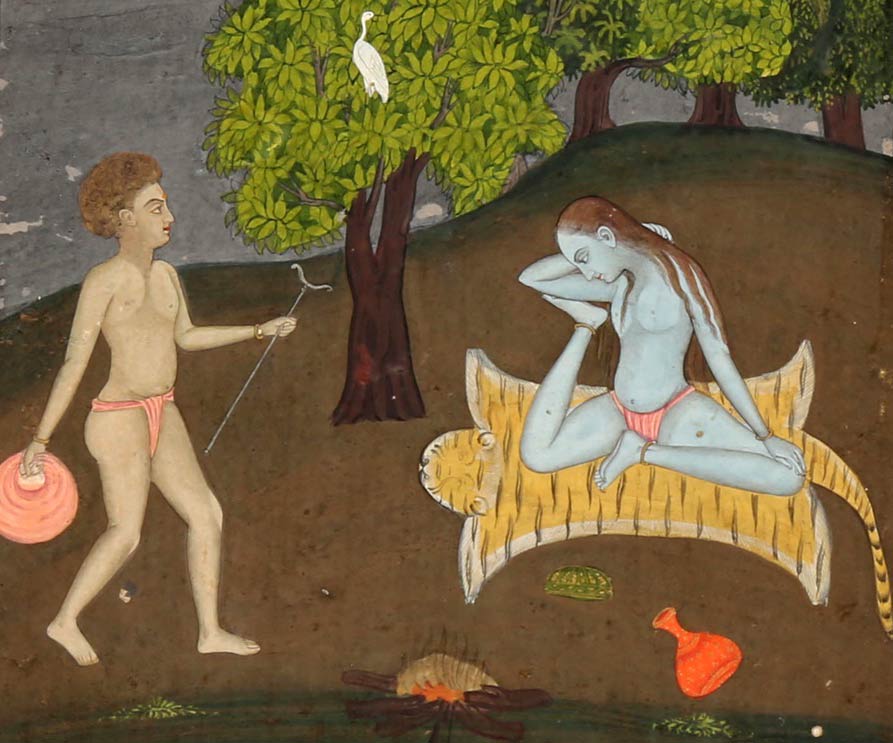
The nature of yoginis differ, according to the traditions.
In the Shakta tradition, one of the major branches of Hinduism, Devi, the supreme goddess of the universe is considered a “Maha Yogini” (the highest yogini), and she embodies Shakti, the universal creative energy, without which nothing can manifest. Yogis consider that the Shakti sleeps in the human body like a coiled serpent (kundalini) and must be awakened by various techniques in order for the aspirant to reach a state of bliss.
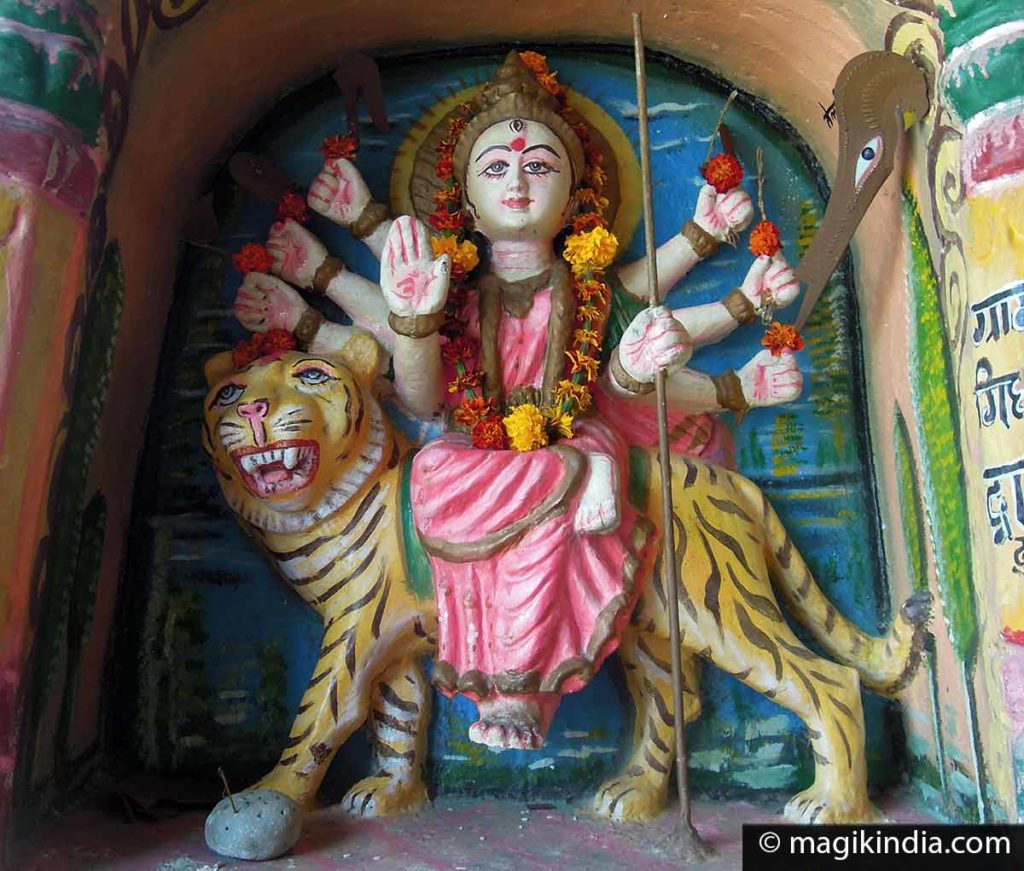
In the Hindu tradition of the Nath, a monastic group linked to Shaivism that emerged around the 13th century CE, yoginis are female sanyasins (nuns), assiduously practicing the principles of Hatha Yoga. They are advanced seekers and initiators on the path of Self-knowledge.
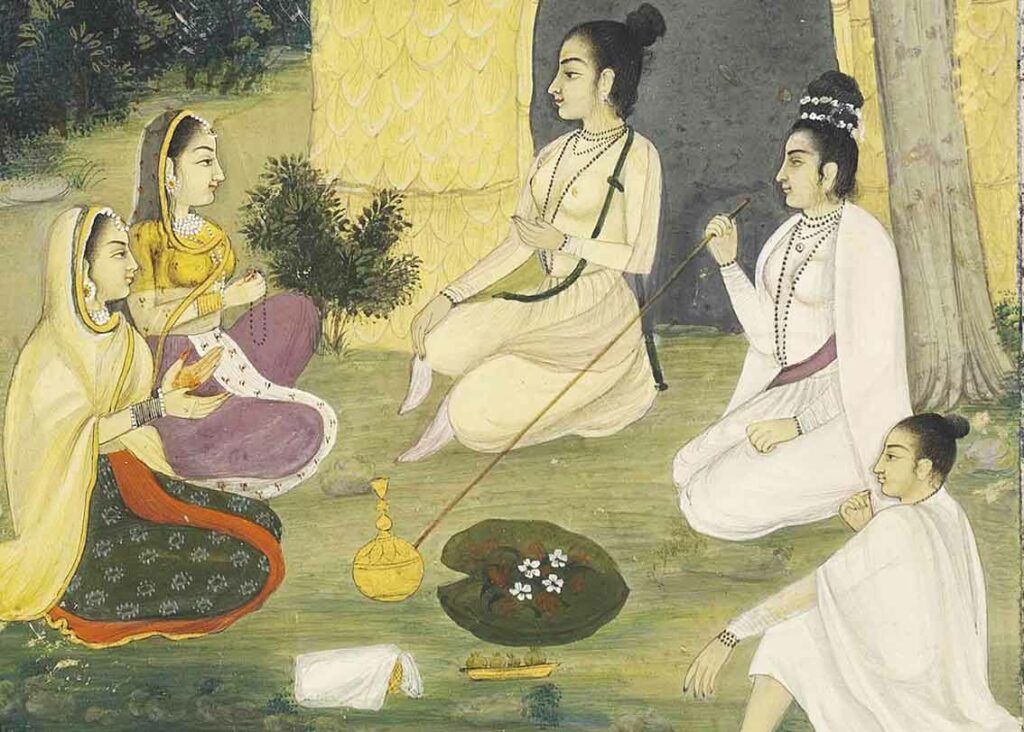
Yoginis also refer to female entities who have acquired superior faculties (siddhi) through intense “sadhanas” (spiritual practices). It is said that these “super women” having obtained total control of body and mind had supernatural powers such as the ability to levitate or leave their bodies at will.
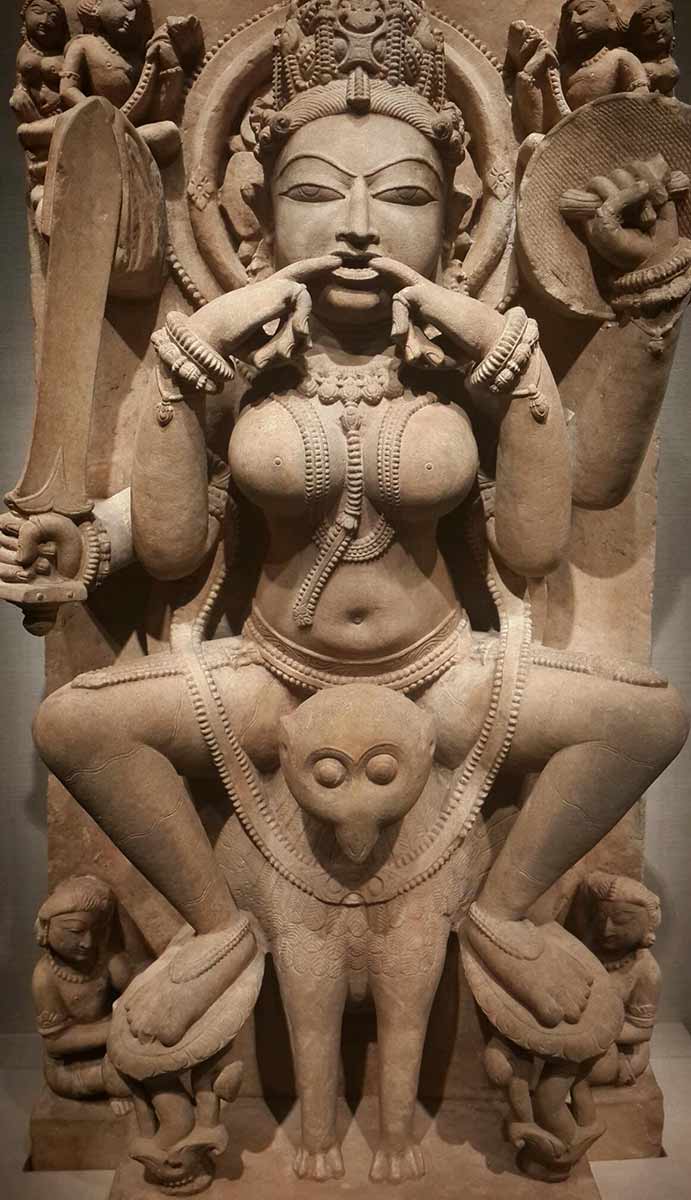
Some texts refer to yoginis as female demons engaging in witchcraft practices. From this come the superstitions and fears that surround the temples of yoginis.
Perhaps we can say in conclusion that a yogini is neither an ordinary person or a goddess but a woman who, with the help of inner searching, has reached a high level of consciousness and can thus embody Devi, the universal force, Shakti.
The number 64
In India, the number 8 is sacred and therefore its square, 64, is too.
Indian mythology states that from Devi, the Maha Yogini, emerged 8 great Divine Mothers called Ashta Matrikas. These 8 Matrikas manifested each in turn into 8 sacred Shaktis, thus resulting in 64 Tantric Yoginis.

The number 64 can also be related to the 64 traditional arts known as “Chausath Kalas” which in ancient India were an integral part of a person’s upbringing. The various artistic poses of the Yoginis in the temples are an expression of this tradition.
There is no universally recognized list of the 64 Yoginis, so I will not quote them here. Here is a link however if you want to go further: www.hindu-blog.com
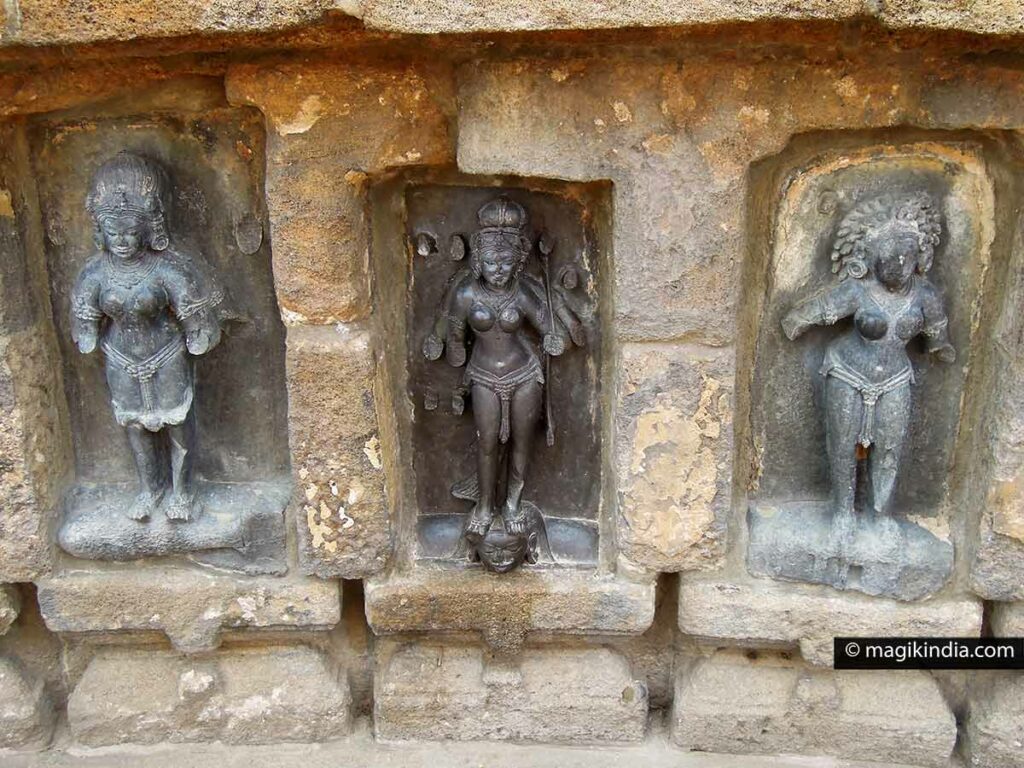
The temples of the 64 Yoginis
From around the 8th century the yogini temples appear in groups, generally of 64 but also of 42 and 81 (which are commonly grouped under the number 64). It is known from temple inscriptions that the cult of yogini flourished from the 9th to the 12th CE and extended until the end of the 16th century. After that it sank into oblivion.
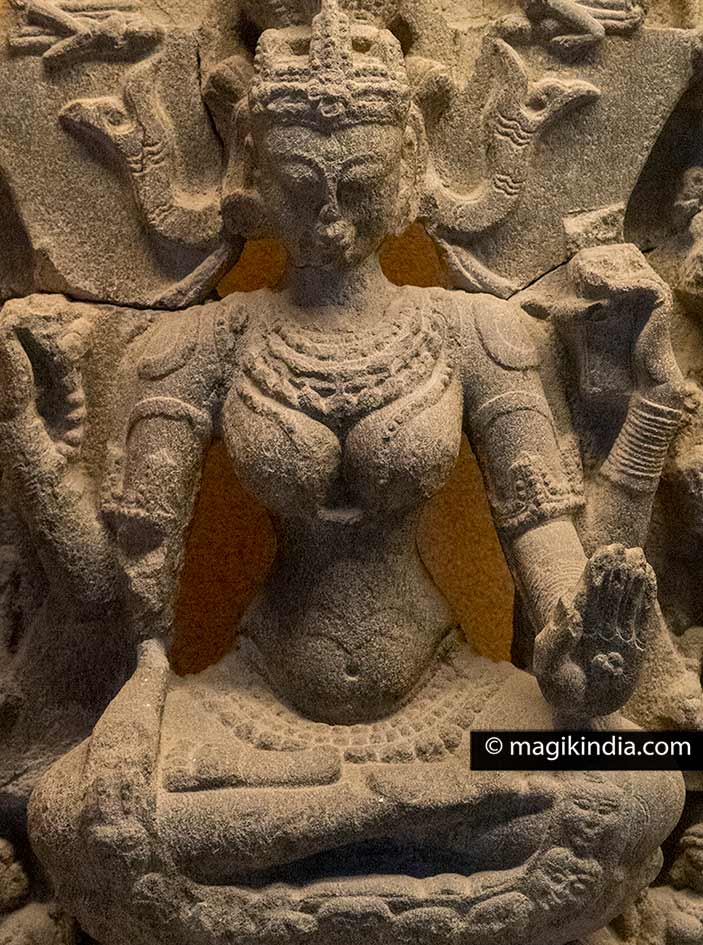
According to the historian Vidya Dehejia, the worship of these groups of yoginis finds its roots in non-Vedic, indigenous sources. The deities of the tribal people have been gradually integrated into Brahmanic worship. Other researchers believe that the cult of the 64 yoginis is an extreme form of tantra and would have appeared in the 8th century.
For my part, and I agree here with the thesis of Shaman Hatley, I think that groups of yoginis have existed since illustrious times as they are already mentioned in ancient Vedic texts. I quote him, “the textual representations of yoginis and their representation in sculpture suggest a direct continuity between the practices described in the tantric texts and the yogini temples.”
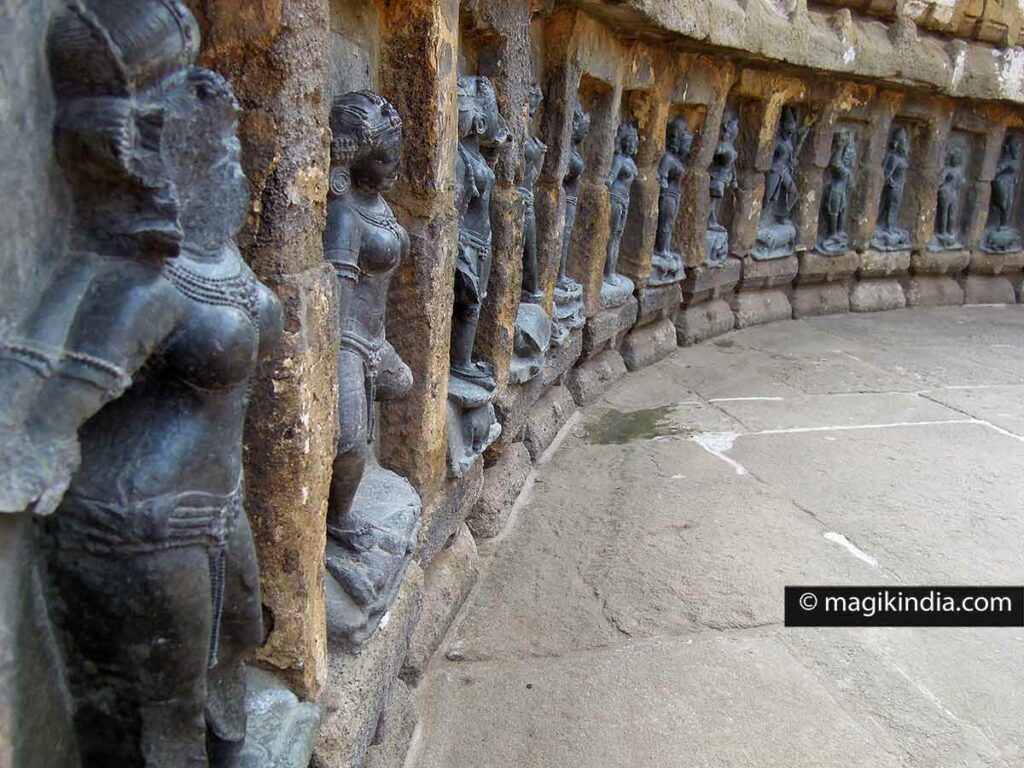
Surprisingly, the yogini temples were only rediscovered in the 19th century. Their location well away from cities is surely one of the main reasons. A further reason is the yogin’s bad reputation, remember that these temples were places of esoteric initiations using red tantra (see above).
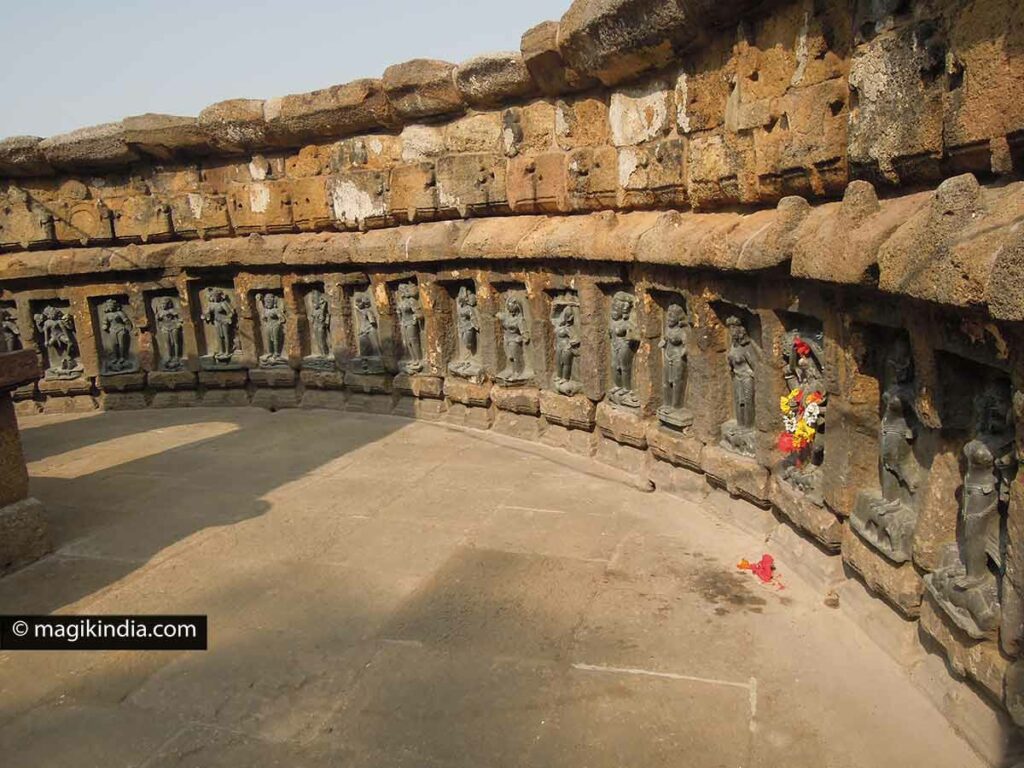
The temples of yoginis, far from frightening me, totally fascinate me, if only for their architecture which does not follow conventional styles.
The yogini temples are hypothral. Hypothral is architectural jargon meaning “being open to the sky”. Why this absence of a roof? Nothing is recorded referring this feature. Is it the nature of the rituals which required an open space or was it simply for the observation of the sky and the phases of the moon?
The temples are most often circular with an altar in their center where the rituals were probably performed. Generally, there is the statue of the god Shiva (the male counterpart) or one of his avatars such as Bhairava or Nataraja (see below).
Now ready for the visit of the temples?
Hirapur temple (Odisha)
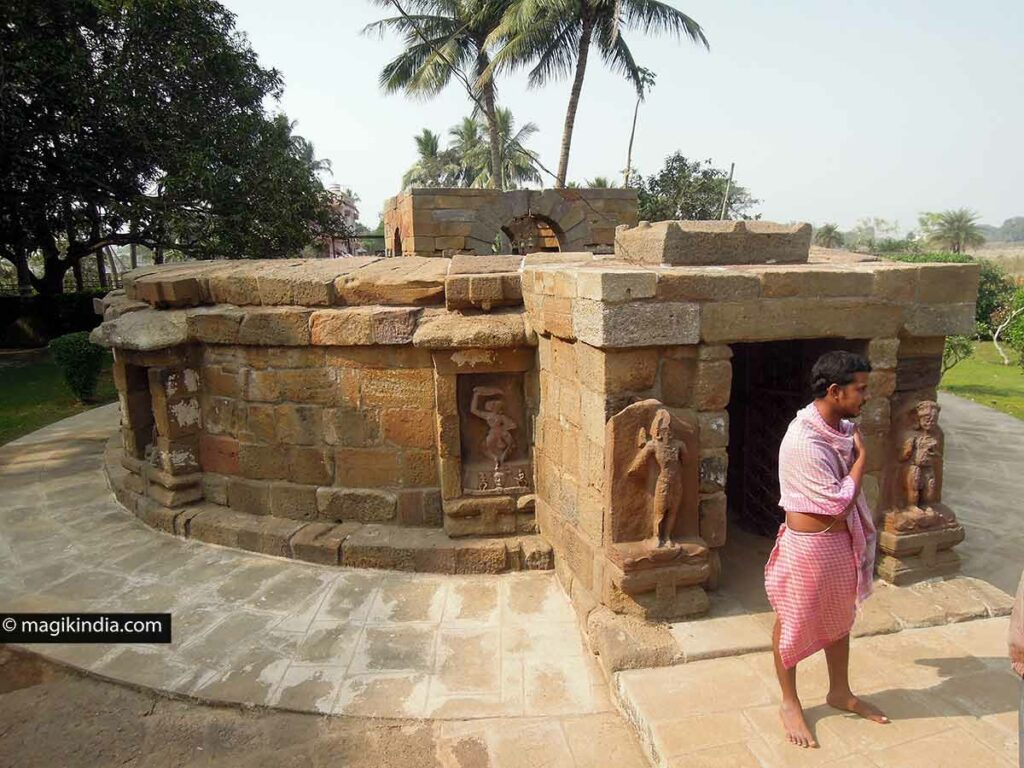
I remember my surprise and my delight when I discovered the temple of Hirapur, located in the countryside, 20 km from Bhubaneshwar. It was unlike anything I had seen before. This long string of goddesses arranged in a circle struck me as magical.
The temple was only rediscovered in 1952, very surprising when you consider that it is not far from the famous temples of the Kalinga kings.
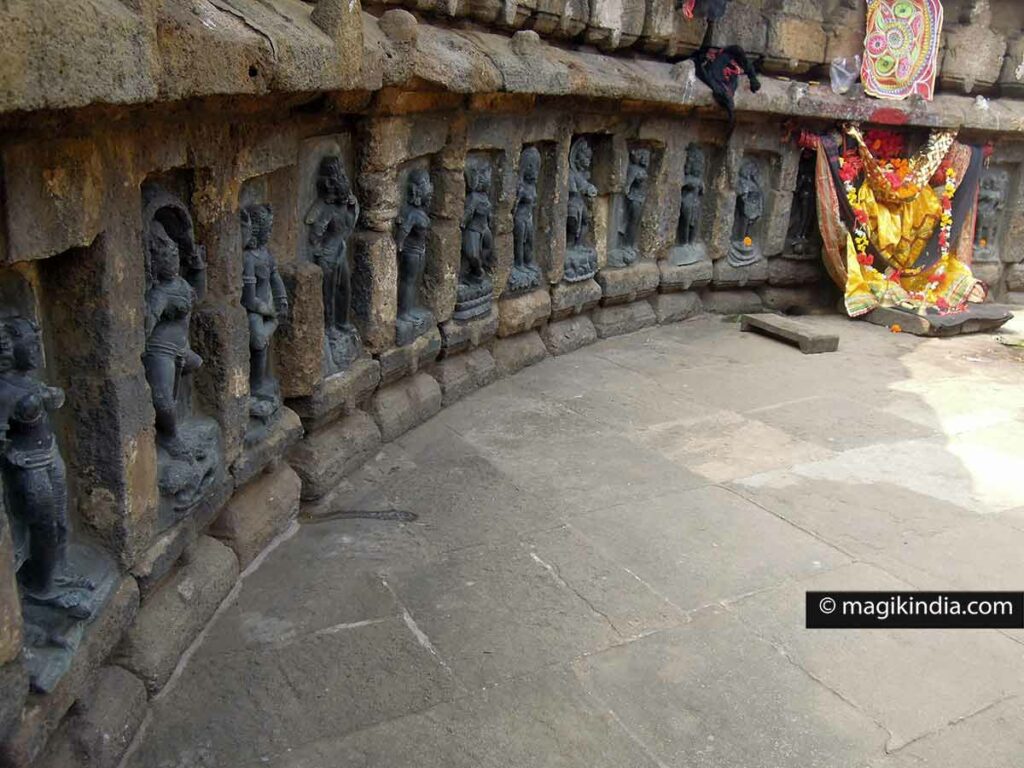
One enters the interior of the sanctum through a narrow, low doorway flanked on either side by a pair of male Dvarapala (temple guardians). It overlooks a small circular open-air space about 8 meters in diameter. The wall, made of sandstone block, contains 60 niches each housing a statue of a yogini in black schist. It is in the yogini temples where the statues are best preserved.
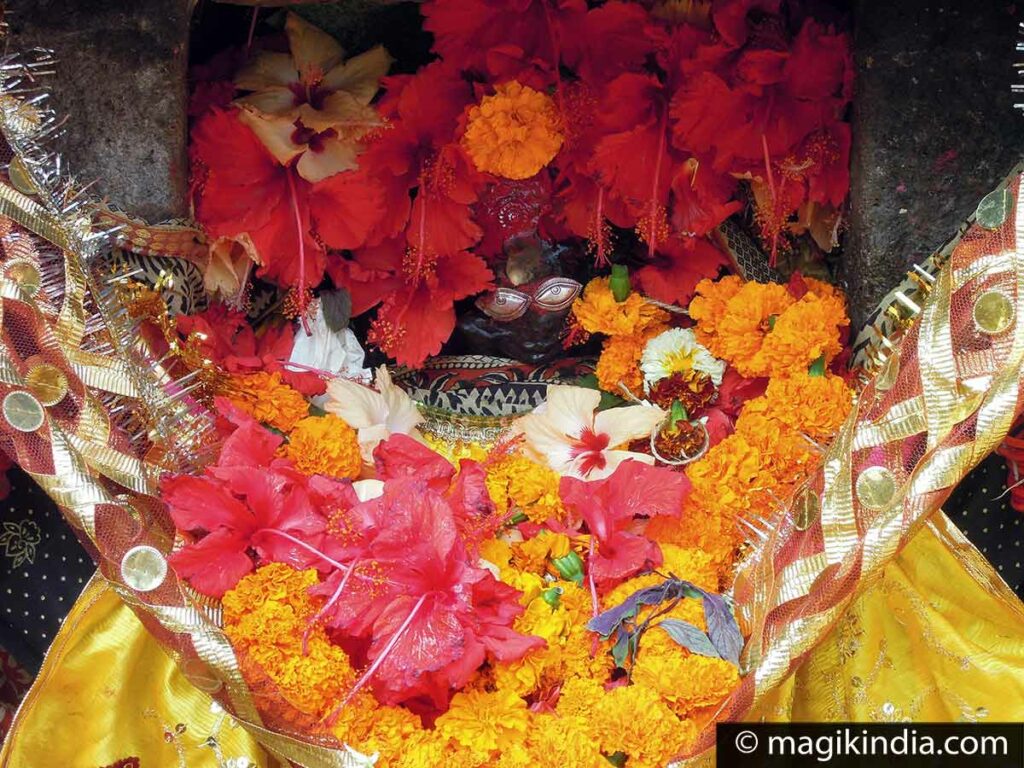
Each statue appears in different poses, standing on their “Vahana” (their animal-vehicle). Their faces are smiling and their voluptuous bodies wear only a simple piece of cloth on the hips. Yoginis surround the main image of the fierce goddess Kali, standing on a human head.

In the center of the circle sits the Chandi Mandapa, the altar, on which 3 other yoginis are carved (there were previously 4) as well as 4 images of Bhairava (Shiva in his fierce form), one standing and four seated, all endowed with an Urdhva linga, a penis in erection.
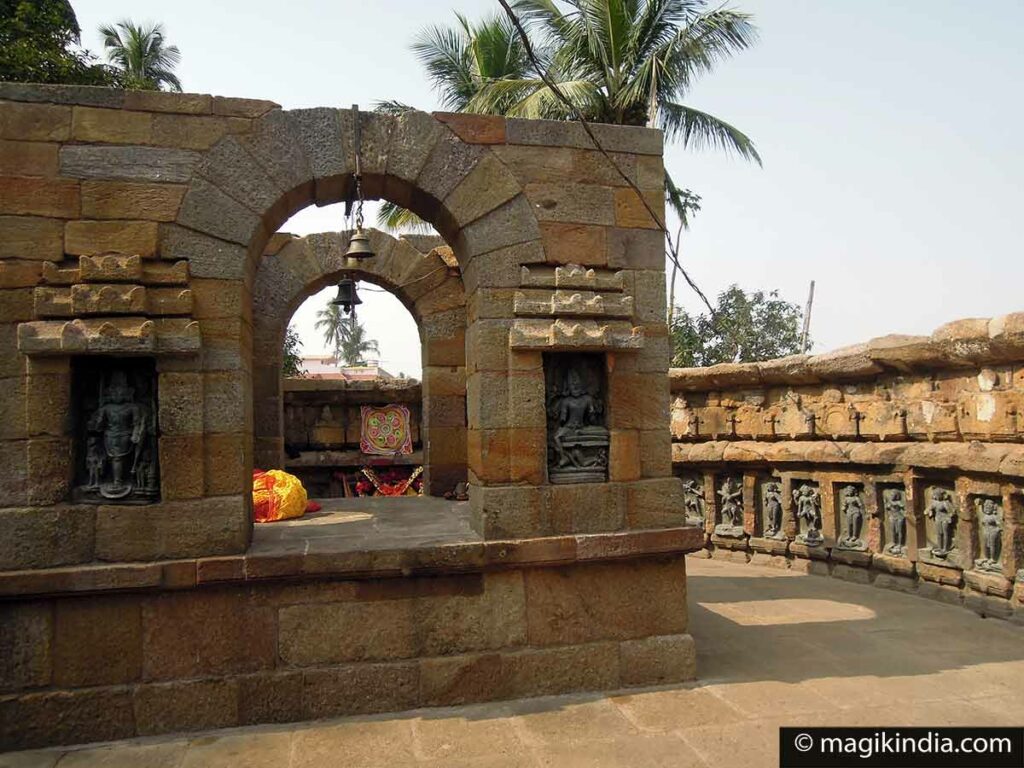
If you draw the plan of this temple, you can see that it takes the form of a Shiva-lingam, symbolizing the creative union or the cosmos (see the meaning of the Shiva-lingam in another of my articles).
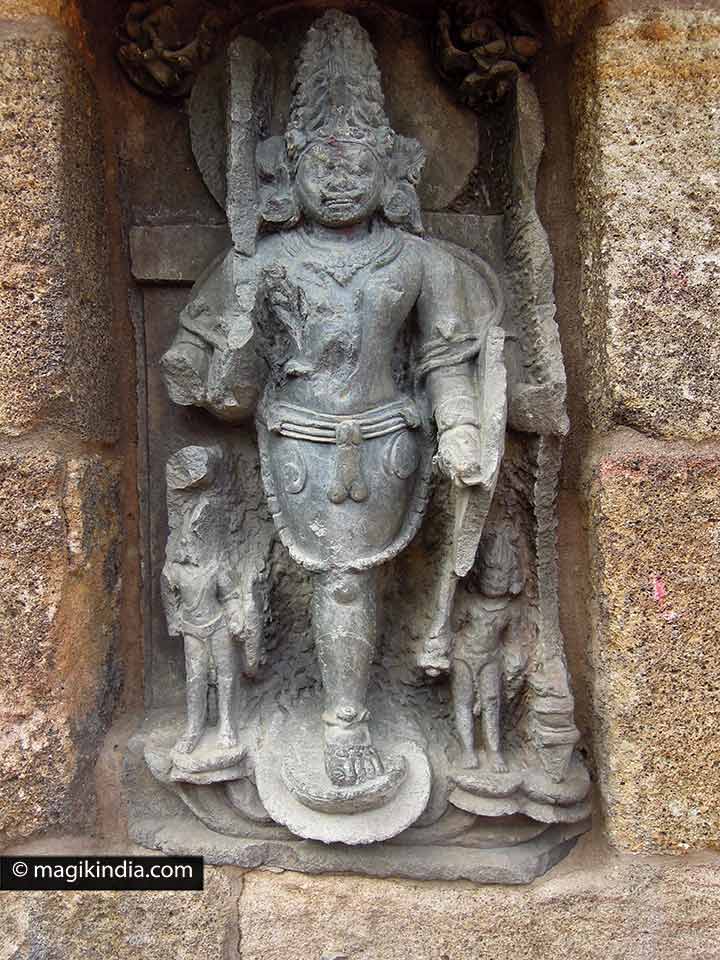
On the outer wall of the temple are nine Katyayani goddesses, the nine manifestations of Goddess Durga, with expressively harder faces.
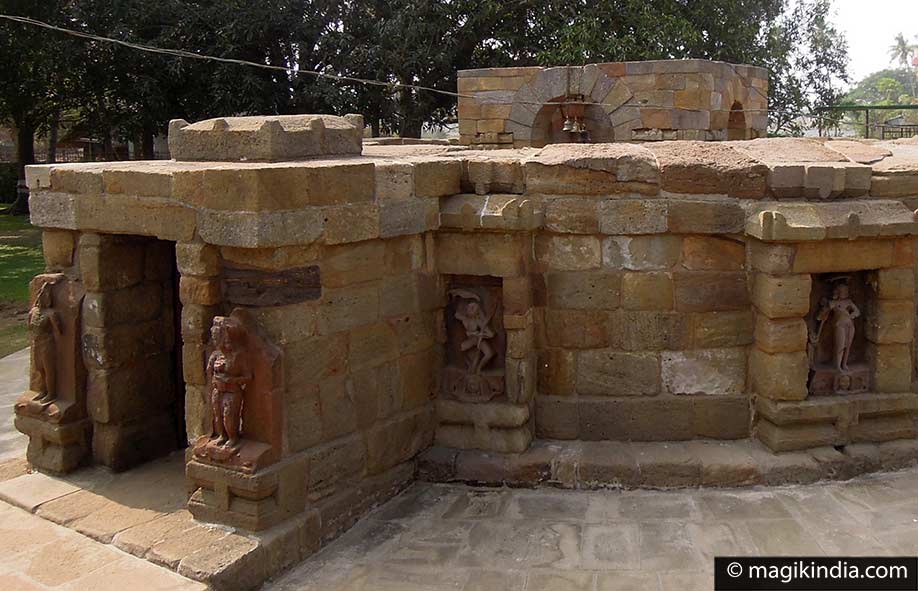
Ranipur-Jharial, Balangir temple (Odisha)
Ranipur-Jharial, also located in Odisha, was the first of 64 yoginis to be rediscovered (1853). Just like that of Hirapur, it is circular and hypethral. It is believed that this spiritual center dating from the 9th and 10th century was more important before, illustrated by the many remains that surround the main temple.
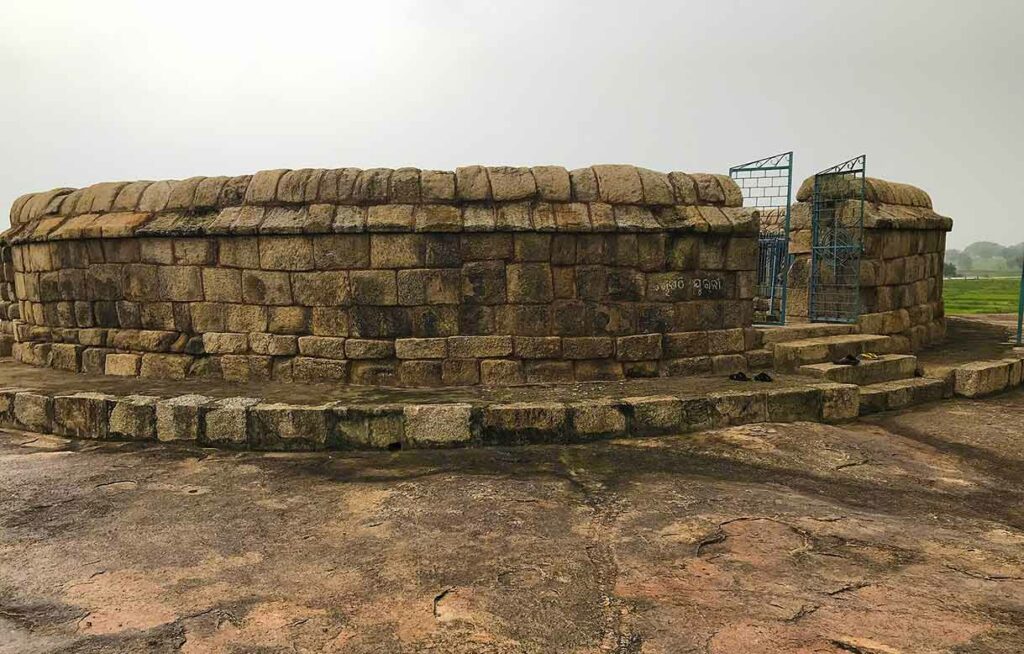
62 of the 64 yogini statues have survived and are now protected by an unattractive blue grid. Here they are portrayed in one of the 108 “Karanas”, the key transitions of classical Indian dance. Fourteen of them have an animal head, among others; cat, elephant, snake, horse, buffalo, antelope, leopard and also sow. According to Tantra, yoginis were shape-shifters and had the power to transform into animals.
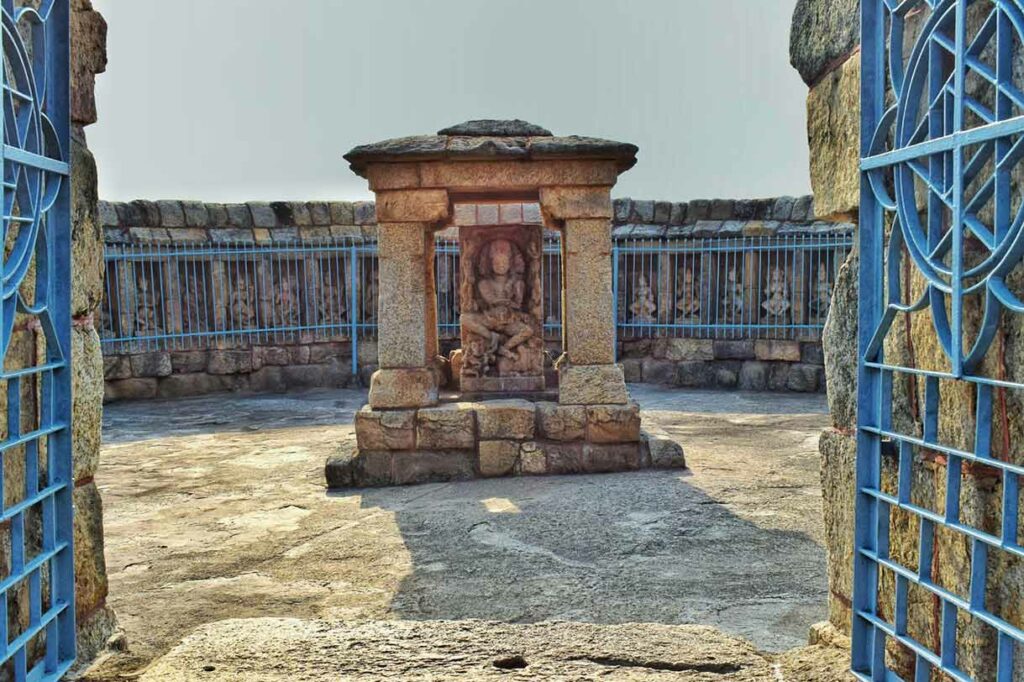
In the center, a four-pillared temple houses a statue of Shiva-Nataraja, the cosmic dancer. He has three heads and arms bearing weapons as well as an urdhva linga.
Ekattarso Mahadev ou Mitaoli temple (Madhya-Pradesh)

The Temple of the 64 Yoginis of Mitaoli is located around Morena in northern Madhya Pradesh, a little known region which has many other architectural wonders (see the hidden treasures of Madhya Pradesh).
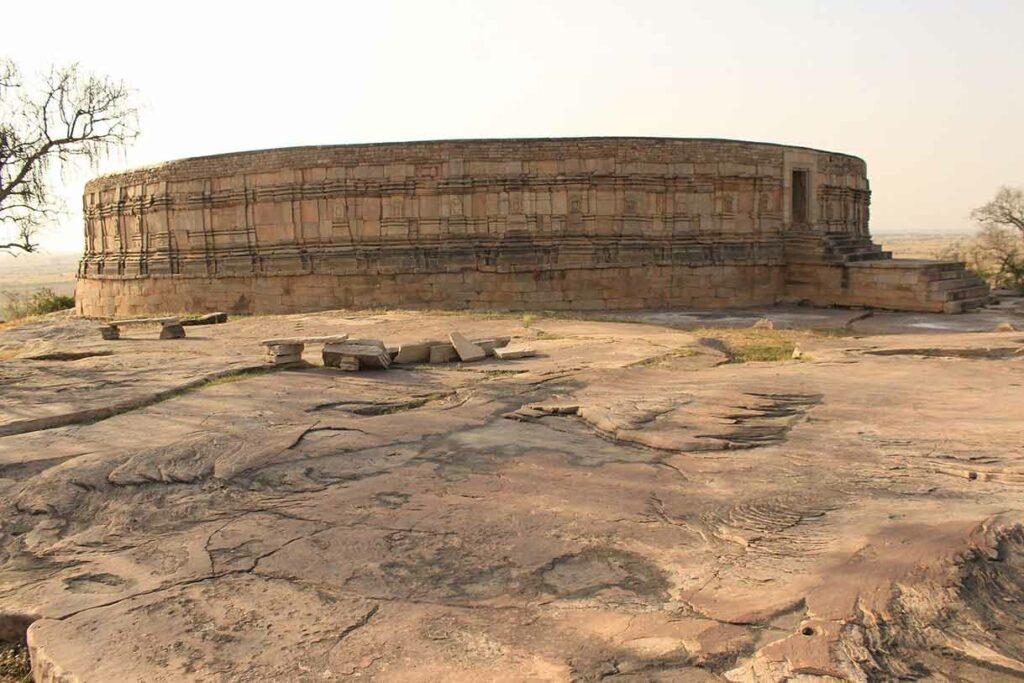
It is surely one of the most impressive 64 yoginis temple because of its size (the largest) and its location on a 30 meter high rocky promontory lost in the middle of nature. It is said that it served as a model for the Indian Parliament.
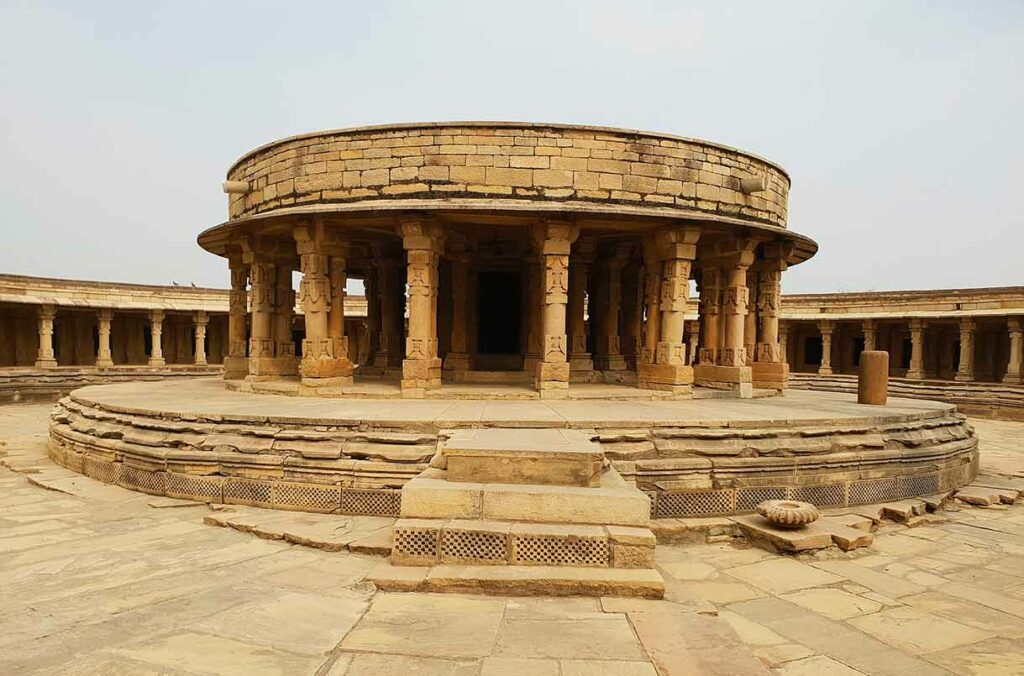
We reach it by climbing a hundred steps which allow us to take in a panorama of plains and fields. The entrance is cut into the surrounding wall itself and opens onto a huge space 52 meters in diameter.
The circular wall contains 65 chambers which each house a Shiva-lingam which replaced the statues of the original yoginis (64 yoginis and one of Devi).
In the center, as in earlier temples, is a circular colonnaded mandapa (porch) dedicated to Lord Shiva.
The surface of the outer wall was once decorated with statues of couples whose shapes are now only vaguely distinguishable.
Bhedaghat temple (Madhya Pradesh)
Also called the “Golaki Math” (“circular lodge”), the Bhedaghat temple sits atop a hill above the Narmada River at Bhedaghat (hence its name), a few kilometers from Jagdalpur. Unusually, it has 81 yogini shrines instead of the usual 64. However in general it has been included among the 64 yoginis.
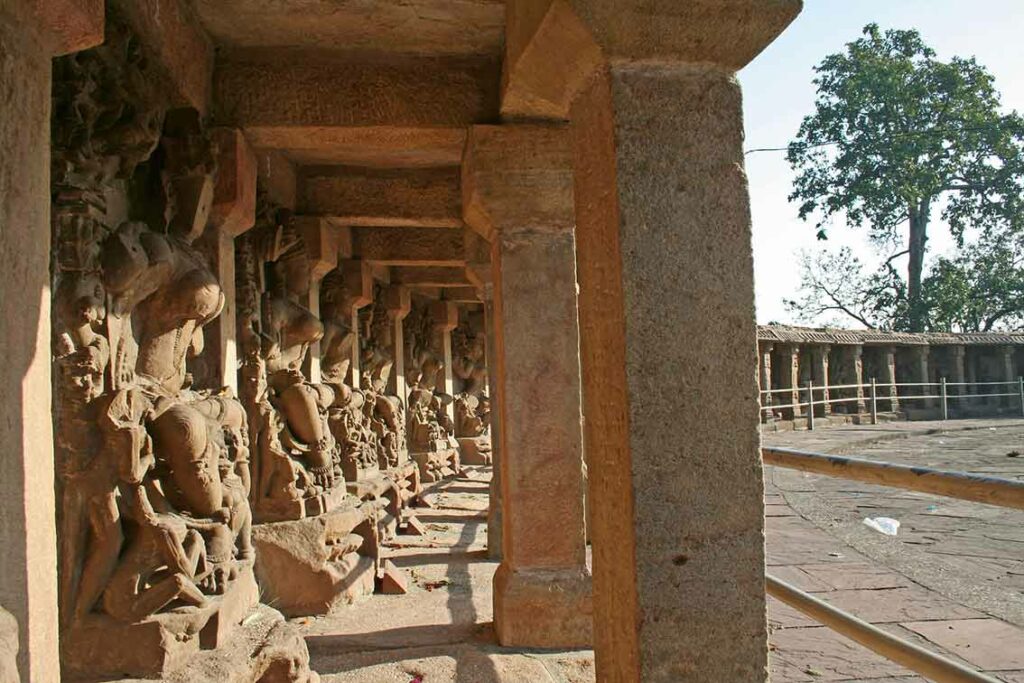
This 38-meter circular temple is believed to have been built in the early 11th century CE by King Yuvaraja II of the Kalachuri dynasty of Tripuri.
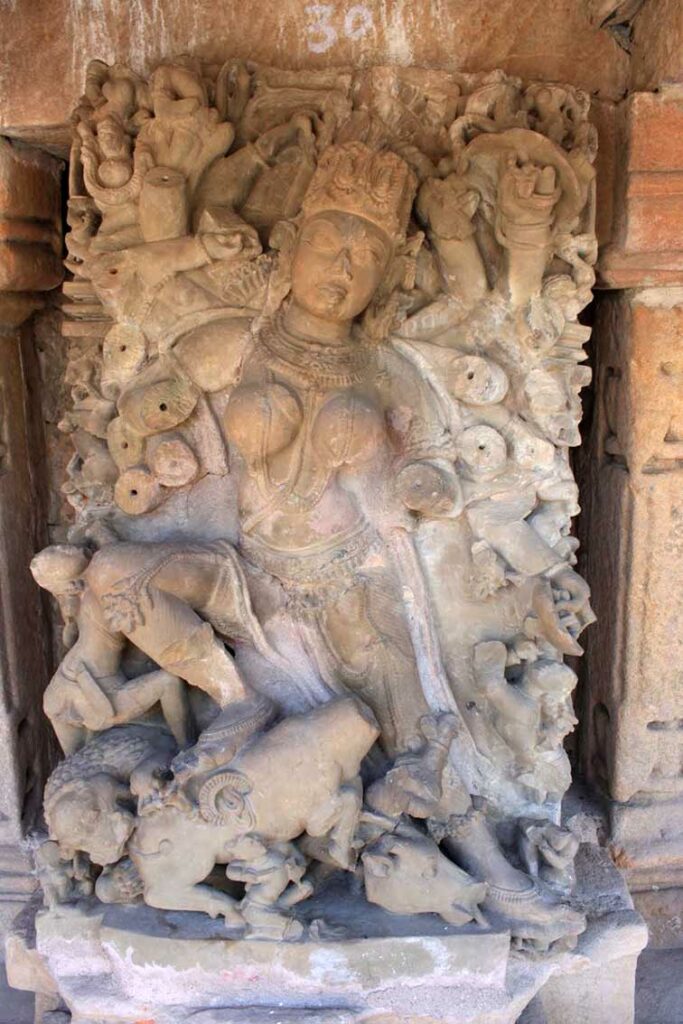
The yoginis are represented here almost life-size and display voluptuous forms. A further example of the freedom of representation of the female body at that time.
Most of the images of the yoginis, however, have been vandalized. Among the statues that have survived, that of Kamada (“the love giver”) attracts particular attention. It includes a yoni-puja – a ritual dedicated to the vagina. The “Erudi” yogini, with the head of a horse, is also in perfect condition.
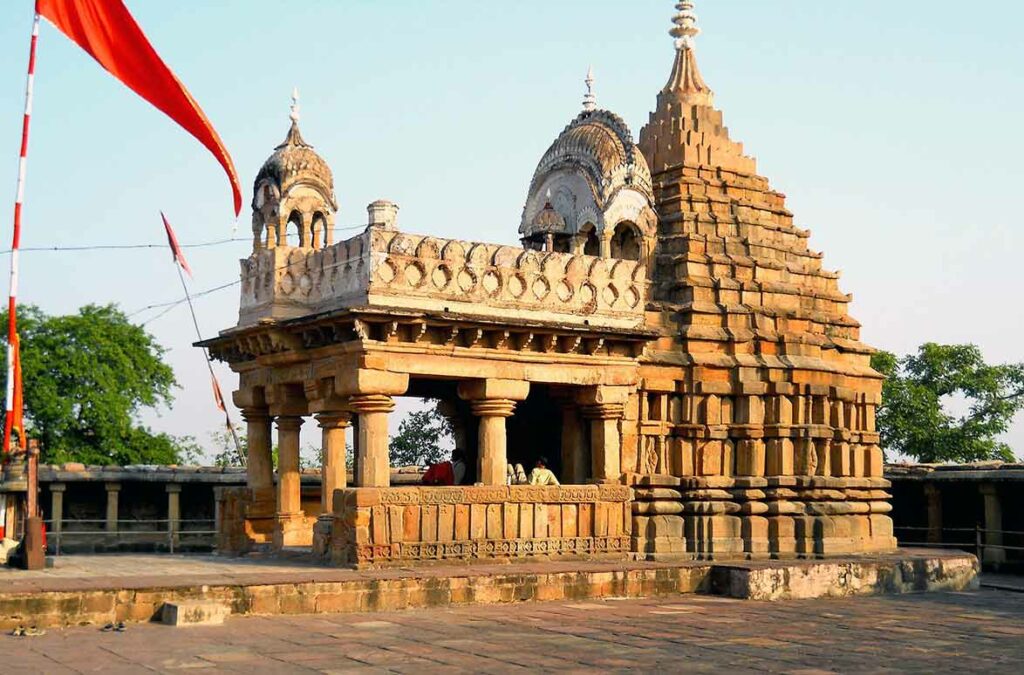
The central temple which is actually off-center is dedicated to Gauri-Shankar and seems to have been built several centuries after the circular temple. It includes the black schist statues of Shiva and Parvati and is still in operation.
Khajuraho temple (Madhya Pradesh)
The fifth temple of the 64 yoginis is located in Khajuraho (in Madhya Pradesh) a few kilometers from the famous temples of the same name. There are only a few ruins left of this sanctuary and, unlike the others, it is not circular in shape but rectangular.
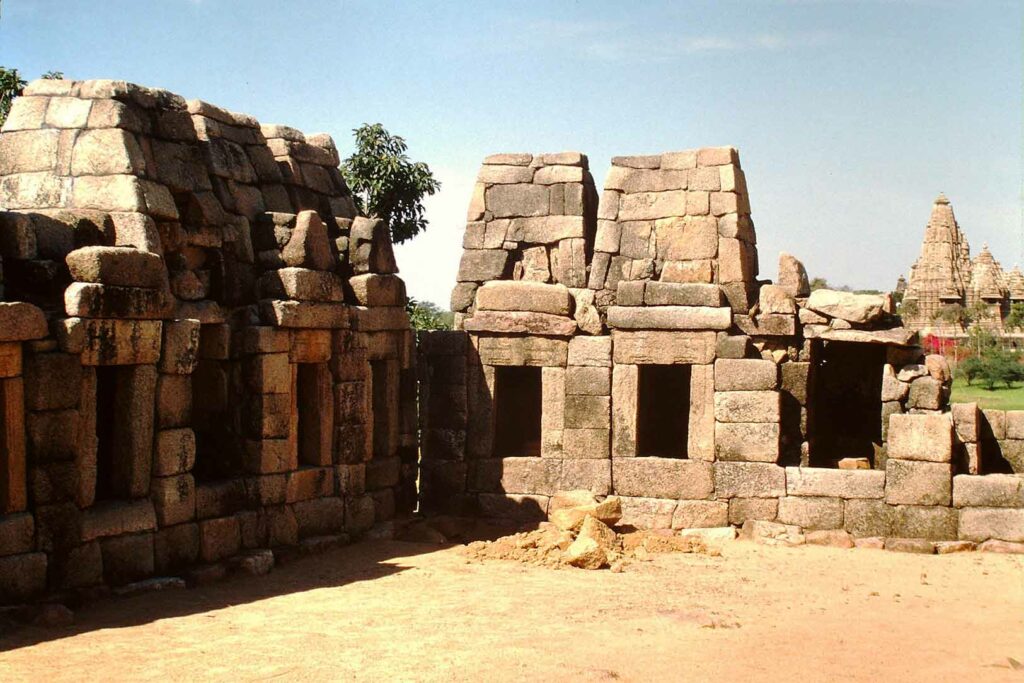
There are no longer any statues of yoginis in the temple but it is assumed that apart from a single much larger cell which was dedicated to the goddess Durga, each of the other cells housed an image of a yogini.
During excavation at the site three large statues of Matrikas, the mother goddesses, (Brahmani, Maheshvari and Mahishamardini) were found and they are now kept in the Khajuraho Museum.
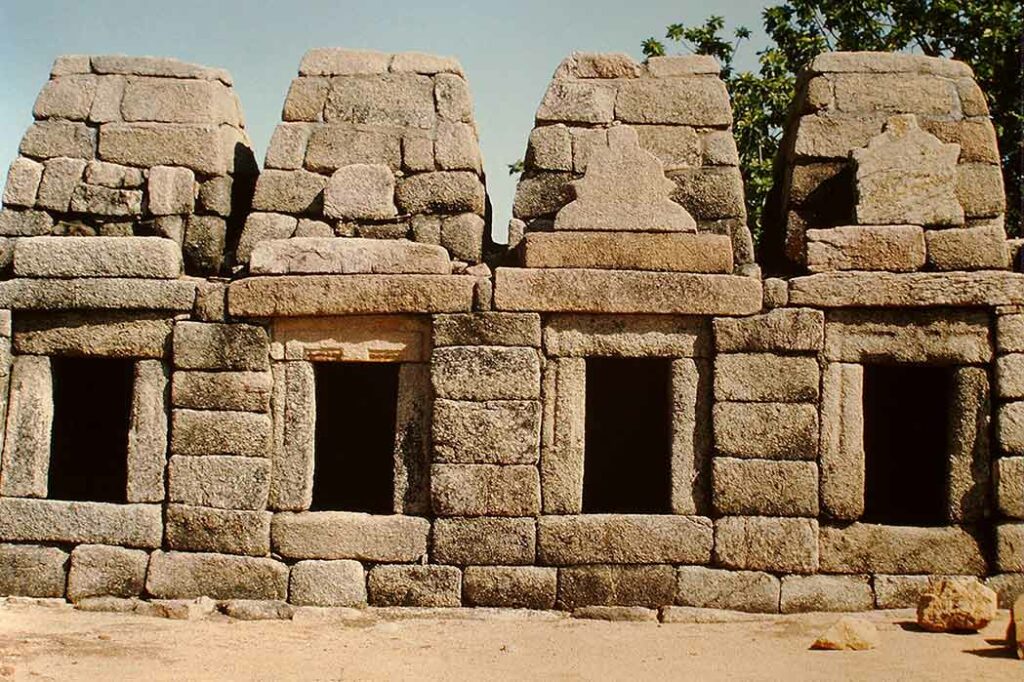
42 yoginis temple (Madhya Pradesh)
In the villages of Dudhai and Badoh in Madhya Pradesh, one discovers the sparse ruins of circular temples which contained 42 niches dedicated to yoginis. They are adjacent to other remains of Jain and Hindu temples.
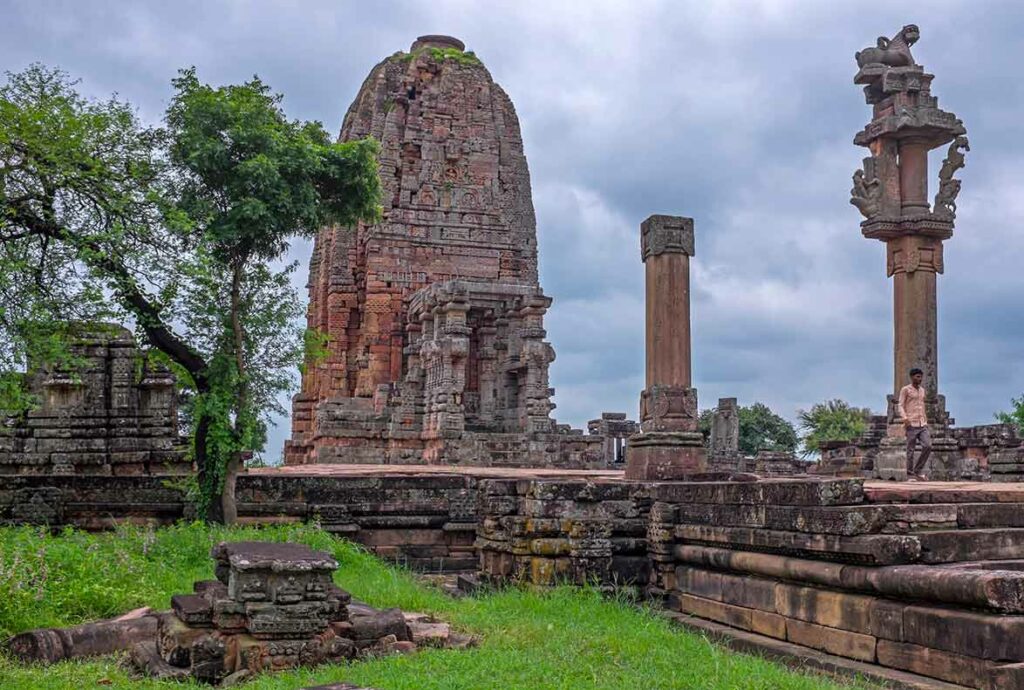
Traces of other yogini temples can be found scattered all over India. Of these sanctuaries only a few “old stones” remain, now engulfed by nature. Have they suffered the wear and tear of time or has there been a deliberate desire to erase this very specific part of India’s heritage?

Very nice and descriptive information about 64 Yoginis. Thanks for describing and narrations.
thanks for your message Manish. Have a great day! Mathini
STUNNING!
thanks yogini 🙂
Thank you
Thank YOU, regards, mathini
Thanks for enlightening with this rich heritage of Yogini Temple. This is a great article with so many details.
Thanks Rishi, have a great day!
Thanks for this inspiring text !
Thanks for reading it! Regards, Mathini